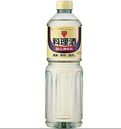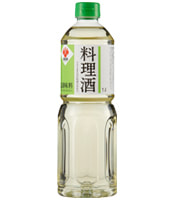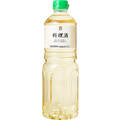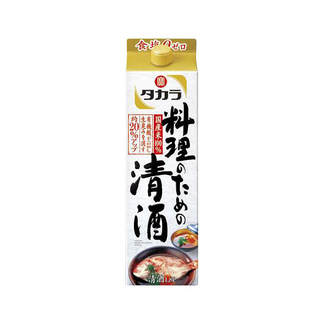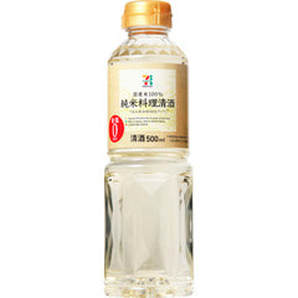Cooking Sake(rice wine)
Sake(Pronounced "Sakei") is an alcoholic beverage made by fermenting rice. There are two types of rice wine. One is for drinking and other for cooking. A cooking sake is one of the most important ingredients in cooking Japanese dishes along with soy sauce in mirin.
What sake does in cooking:
You can use drinking sake for cooking, but as the cooking sake is developed for the purpose of cooking with more organic acid for flavor and umami. Besides that, cooking sake will be significantly less expensive, so save your drinking sake for your pleasure!
There are two types of cooking sake:
What sake does in cooking:
- Brings out the umami in the material and gives flavor and depth.
- Takes away the smell.
- Makes fish, meat and root vegetables tender
- Helps preserve the food.
- Seals the flavor.
- Enable the condiments to seep into the ingredients better
You can use drinking sake for cooking, but as the cooking sake is developed for the purpose of cooking with more organic acid for flavor and umami. Besides that, cooking sake will be significantly less expensive, so save your drinking sake for your pleasure!
There are two types of cooking sake:
Sake with added salt. (醸造調味料/jouzouchoumiryo)
Most cooking sake you see in the supermarket may fall under this category. The reason for adding salt is to make it unfit for drinking, thus avoiding tax on it. Also, shops with no liquor licence can sell it too. The price will be lower as liquor is avoided (120 yen/liter)
If you use this type of sake, make sure you add less salt as the salt content is quite high (2-3%) Although the price is cheaper, it sacrifices some function of the sake such as adding more flavor and umai to the ingredient as well as sealing the flavors in. Also, as it is not considered as liquor thus not bound to it's regulation, it is free to add other things than rice, so it may contain other additives. If you would like to avoid this, choose the one that says 純米料理酒(junmai ryourishu) which means "100% rice cooking sake" and would only consist of rice and salt.
Most cooking sake you see in the supermarket may fall under this category. The reason for adding salt is to make it unfit for drinking, thus avoiding tax on it. Also, shops with no liquor licence can sell it too. The price will be lower as liquor is avoided (120 yen/liter)
If you use this type of sake, make sure you add less salt as the salt content is quite high (2-3%) Although the price is cheaper, it sacrifices some function of the sake such as adding more flavor and umai to the ingredient as well as sealing the flavors in. Also, as it is not considered as liquor thus not bound to it's regulation, it is free to add other things than rice, so it may contain other additives. If you would like to avoid this, choose the one that says 純米料理酒(junmai ryourishu) which means "100% rice cooking sake" and would only consist of rice and salt.
Sake with no added salt (清酒/seishu)
This will be made only from rice and no salt. The price will be slightly higher because of the tax, but will have the full benefit of the sake and it's function. As it follows the regulation of the liquor tax law, it will not contain any additives. If you can find it in the supermarket, I personally recommend you to use this instead of the added salt sake. You will know which one if you see the kanji "清酒”
This will be made only from rice and no salt. The price will be slightly higher because of the tax, but will have the full benefit of the sake and it's function. As it follows the regulation of the liquor tax law, it will not contain any additives. If you can find it in the supermarket, I personally recommend you to use this instead of the added salt sake. You will know which one if you see the kanji "清酒”




